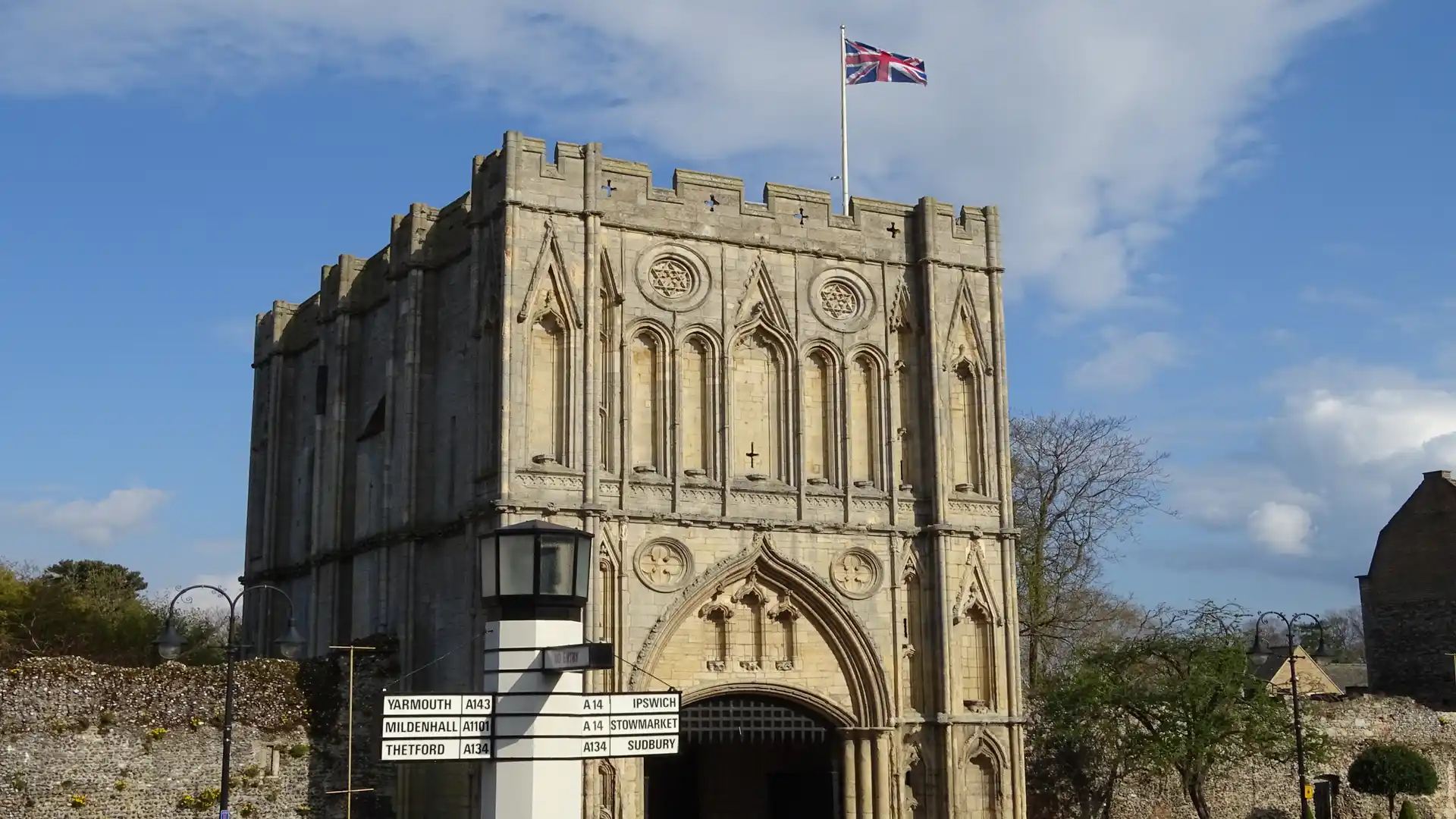

The St Edmund’s Way is a 79-mile (127 km) pilgrimage route from Manningtree on the Essex border to Brandon near the Norfolk frontier. Dedicated to the story of St Edmund, England’s first patron saint, the trail crosses some of Suffolk’s most historic landscapes — medieval market towns, abbey ruins, ancient woods, heathland, river meadows, and rural villages that have barely changed in centuries.
From the water meadows of the Stour Valley, the route joins the Stour Valley Path to Sudbury before turning north through the classic Suffolk wool towns of Long Melford and Lavenham. It then continues through quiet countryside to Bury St Edmunds, home of the great Abbey of St Edmund, before heading through Thetford Forest to finish at Brandon on the River Little Ouse.
The St Edmund’s Way can be walked in sections or as a multi-day pilgrimage, with good rail access at both ends and in several major towns along the route.
Type: Pilgrimage Long-Distance Trail
Distance: 79 miles / 127 km
Start/End: Manningtree – Brandon
Time Required: 5–7 days
Terrain: Farmland paths, river valleys, medieval towns, woodland trails, heaths, and quiet lanes
Difficulty: Easy to Moderate — well-waymarked in most sections with straightforward terrain
Accessibility: Rail access at Manningtree, Sudbury, Bury St Edmunds, Thetford, and Brandon — ideal for car-free walking holidays
Begin on the River Stour at Manningtree, following gentle riverside paths toward Flatford and the iconic scenes of Constable Country.
Follow the Stour Valley Path through meadows, mills, and church towers, passing through Bures before reaching Sudbury.
Walk through peaceful farmland and river valleys to the magnificent village of Long Melford, dominated by its great wool church and historic houses.
A classic Suffolk section through gently rolling countryside linking two of England’s most beautiful medieval villages.
Continue north along quiet lanes and field paths into the historic heart of Suffolk and the ruins of Bury St Edmunds Abbey, an important pilgrimage destination.
Cross open countryside and woodland into the Brecks, where sandy soils, forests, and heaths mark the transition toward Norfolk.
Follow trails through Thetford Forest, finishing beside the River Little Ouse in the market town of Brandon.
Towns & Villages:
Manningtree, Bures, Sudbury, Long Melford, Lavenham, Bury St Edmunds, Thetford, Brandon
Accommodation:
Country inns, B&Bs, boutique stays, countryside lodges, and forest-edge accommodation in Thetford and Brandon
Food & Drink:
Traditional Suffolk pubs, bakeries in medieval villages, riverside cafés, country inns, and local farm produce
Culture & Heritage:
Constable Country, medieval wool towns, abbey ruins, pilgrimage landmarks, historic churches, Thetford Forest, and Suffolk’s ancient countryside

